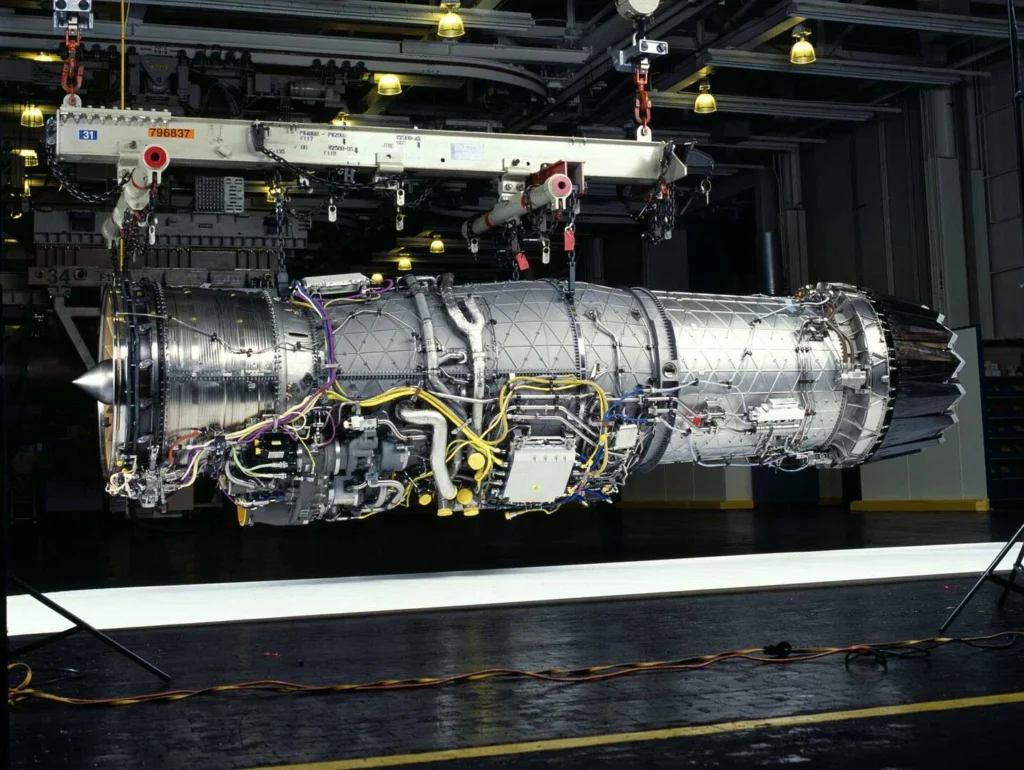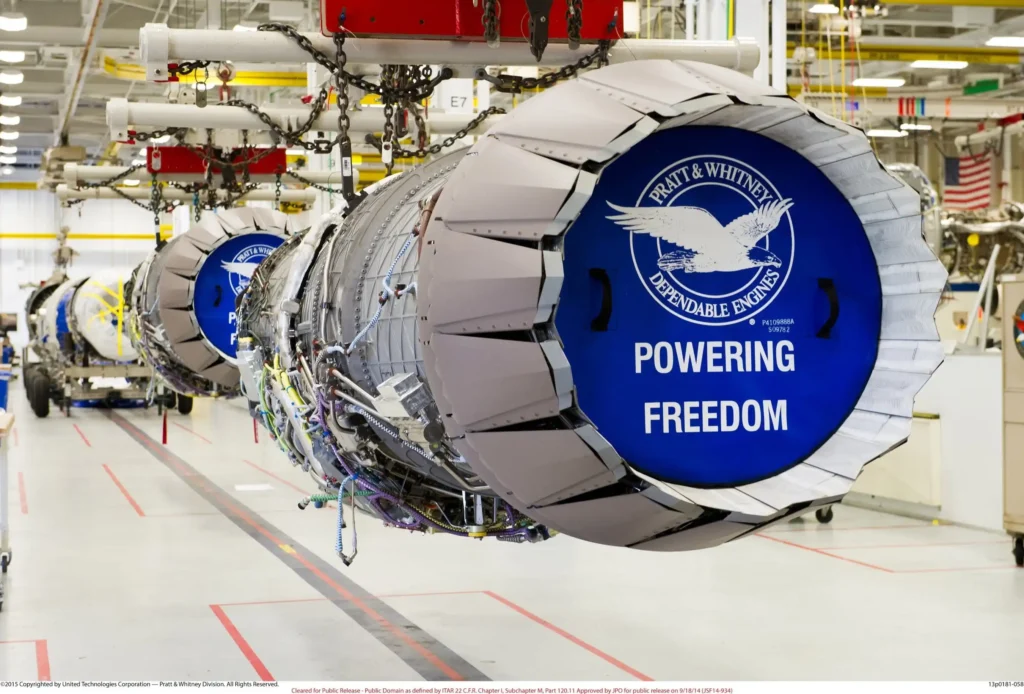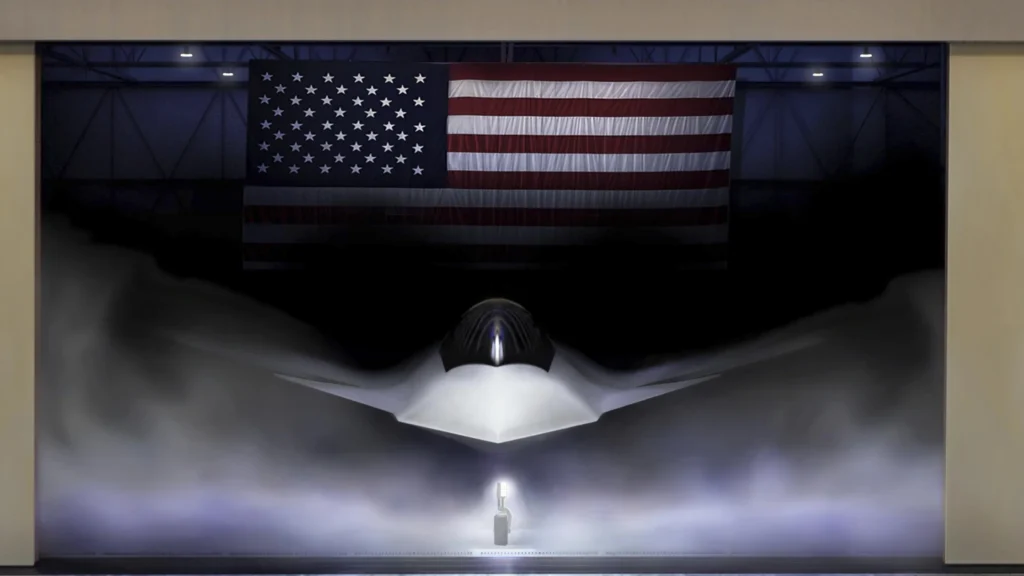
Двигатель Pratt & Whitney F135 питает Lockheed Martin F-35 Lightning II, самый передовой многоцелевой истребитель в мире.
Этот самолет пятого поколения работает с ключевых авиабаз по всему миру, включая NAS Lemoore и RAF Marham, и служит краеугольным камнем авиации для 17 стран.
Несмотря на то, что F-35 является однодвигательным дизайном, необычным по своим размерам, он превосходит многие двухдвигательные истребители по возможности и скрытности. Турбовентиляторный двигатель F135 обеспечивает этот успех с непревзойденной тягой, управлением температурой и готовностью к полету.
 Фото: ВВС США - http://www.jsf.mil/images/gallery/sdd/f135/sdd_f135_018.jpg, Общественное достояние, https://commons.wikimedia.org/w/index.php?curid=86285563
Фото: ВВС США - http://www.jsf.mil/images/gallery/sdd/f135/sdd_f135_018.jpg, Общественное достояние, https://commons.wikimedia.org/w/index.php?curid=86285563Самый мощный реактивный двигатель
Двигатель Pratt & Whitney F135 является технологическим скачком в военной авиации, спроектированным для удовлетворения требований к производительности и живучести вариантов F-35 Lightning II, F-35A (обычный), F-35B (короткий взлет / вертикальная посадка) и F-35C (на основе авианосца).
Полученный из двигателя F119, используемого в F-22 Raptor, F135 обеспечивает до 43 000 фунтов тяги с форсажем и 28 000 фунтов без, обеспечивая скрытность, сверхзвуковые скорости и непревзойденную маневренность.
США и их союзники уже получили более 1300 двигателей F135. К середине 2025 года было поставлено более 1200 самолетов F-35 по всему миру, в том числе значительные заказы из Японии (147), Великобритании (138) и США (2 456).
F135 был выбран по сравнению с GE/Rolls-Royce F136 после обширных испытаний и оценки, основанных на его производительности, надежности и будущем потенциале модернизации.
 Фото: Пратт и Уитни
Фото: Пратт и УитниУникальные особенности двигателя F135
В отличие от многих своих конкурентов, F135 был разработан для низкой наблюдаемости, высокой эффективности и простого обслуживания.
- Низкая тепловая подпись: Критически важен для скрытности, особенно в спорных средах.
- Цифровое управление здравоохранением: Диагностика в режиме реального времени сокращает время простоя и улучшает доступность миссии.
- Упрощенное обслуживание: Сменные компоненты могут быть заменены с помощью только шести стандартных инструментов.
- Интеграция LiftSystem: Вариант F135-PW-600 в паре с Rolls-Royce LiftSystem позволяет F-35B выполнять вертикальные посадки и короткие взлеты.
Архитектура двигателя снижает количество деталей, повышает надежность и снижает вероятность выхода из строя в полете, устраняя опасения по поводу использования одного двигателя для боевых задач.
 F-35 Lightning II: фото Википедия
F-35 Lightning II: фото ВикипедияПроблемы с одним двигателем
Однодвигательные конфигурации в военных самолетах являются спорными. В мае 2025 года президент Трамп публично раскритиковал отсутствие у F-35 резервного двигателя, предложив гипотетический «F-55» с двойными силовыми установками.
Однако для модернизации второго двигателя F-35 потребуется полная реконструкция планера. Бывший министр ВВС Фрэнк Кендалл отверг эту идею как «никогда не рассматриваемую». "
Несмотря на случайные неудачи, показатели безопасности F-35 выгодно отличаются от других самолетов пятого поколения.
Pratt & Whitney утверждает, что показатель отказов F135 более чем в 10 раз ниже, чем у его предшественников. Его высокая производительность и надежность оправдывают однодвигательный подход к платформе F-35.
 F-35 A Lightning: Королевские ВВС Австралии (RAAF)
F-35 A Lightning: Королевские ВВС Австралии (RAAF)Текущие улучшения и обновления ECU
Pratt & Whitney инвестирует в развитие Обновление ядра двигателя (ECU)Это часть предстоящей модернизации F-35 Block IV. Эти улучшения включают в себя:
- Повышение топливной эффективности: Расширяет диапазон и продолжительность миссии.
- Улучшенное термоуправление: Поддержка будущей интеграции датчиков и оружия.
- Повышение прочности и долговечности: Готовит F-35 к изменяющимся боевым потребностям.
Такая модернизация имеет жизненно важное значение, поскольку глобальные воздушные силы адаптируются к более сложным и длительным миссиям, часто без гарантированной поддержки воздушных танкеров.
 F-47 Фото ВВС США через AP
F-47 Фото ВВС США через APФонд шестого поколения
Несмотря на то, что F135 удовлетворяет текущим требованиям к миссии, истребители следующего поколения, такие как F-47 и F-47, также могут быть использованы для создания новых самолетов. GCAP (Глобальная программа боевой авиации) Скорее всего, потребуется двухмоторная архитектура.
Эти самолеты должны обеспечивать большую дальность полета, более высокую электрическую мощность для оружия направленной энергии и расширенные возможности синтеза данных.
В то время как МиГ-31 остается самым быстрым истребителем в мире на скорости 2,8 Маха, F-35 (1,6) подчеркивает скрытность над скоростью.
Поскольку война отдает приоритет выживаемости и синтезу датчиков, а не скорости, философия дизайна двигателя F135 доказывает как практичность, так и перспективность.
Оставайтесь с нами. Следуйте за нами в социальных сетях для последних обновлений.
Присоединяйтесь к нам в Telegram Group для последних обновлений авиации. Следуйте за нами в Google News
Топ-10 самых больших истребителей в мире в 2025 году No5 удивит вас!
Пост Это самый мощный в мире истребитель-реактивный двигатель, впервые появившийся на Aviation A2Z.



![Papież Leon XIV odwiedził Błękitny Meczet w Stambule [ZDJĘCIA]](https://cdn.wiadomosci.onet.pl/1/94sk9lBaHR0cHM6Ly9vY2RuLmV1L3B1bHNjbXMvTURBXy8zOGE2ZDA1YzcxMjAyN2EyZjE2Y2VmZWYzNGEzNmRiMC5qcGeSlQMAzNDNB9DNBGWTBc0JYM0GQN4AAqEwB6ExBA)

